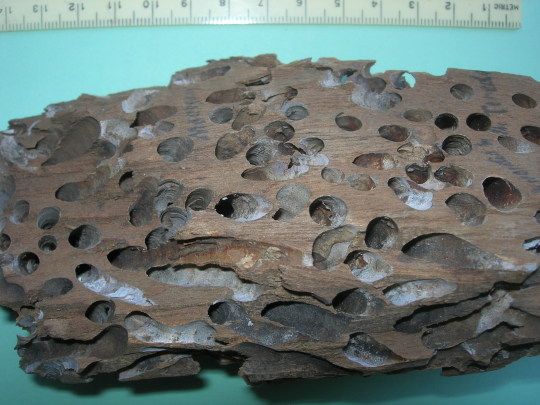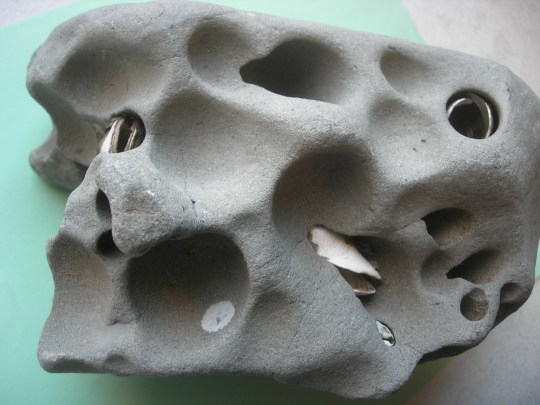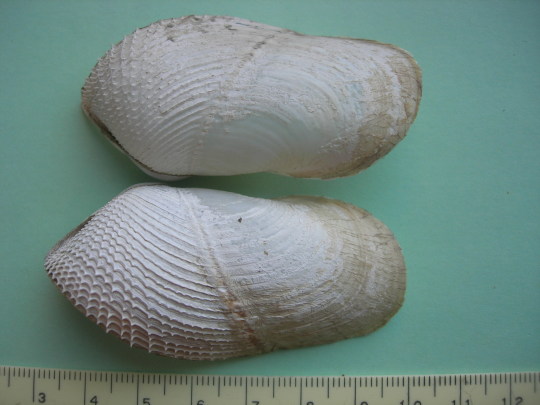by Tim Pearce
Some clams, in the families Teredinidae and Pholadidae, bore holes in wood or rock that is immersed in seawater. We humans often think of wood and stone structures as relatively permanent, but these clams force us to challenge that idea. In fact, the wood-boring clams, known as ship worms, are a centuries-old scourge to shipping activities because they weaken wooden ships and pilings.

The wood-boring clams are highly modified from the clams that normally come to mind. Their shells are reduced to a pair of abrasive cutting tools at the end of a long, worm-like body. The clam twists the shells back and forth, breaking off chunks of wood as it burrows through the wood. The clam eats the wood, aided by symbiotic bacteria that digest the wood. As the clams burrow, they somehow seem to know when they are near another clam’s tunnel and they avoid breaking into it, but how they know is a puzzle.

Human efforts to prevent shipworms from destroying wooden ships and pilings included coatings containing tributyl tin (TBT). While paints containing TBT did protect against shipworm damage, the chemical was toxic and caused reproductive problems in aquatic organisms. In particular, TBT causes masculinization of female fish, snails, and other aquatic species. So, other methods to protect wood are now used instead.
Rock-boring clams also have shells adapted for abrasion at one end, but they differ from the ship worms because the shells of the rock-boring clams are not as reduced as in the ship worms, and the rock boring clams do not derive nutrition from the rock particles. As the clams bore into the rock, they grow, so the burrow tapers wider inward, so the clam shell cannot get out. However, the clam gains great protection from predators. The clam siphons protrude through the rock opening to bring in water and food and to expel wastes.

Other clams specialize in boring in calcium carbonate. These clams are important in the destruction of limestone, reefs made of coral skeletons, and even shells of other mollusks.
Timothy Pearce is the Head of the Section of Mollusks at Carnegie Museum of Natural History. Museum employees are encouraged to blog about their unique experiences and knowledge gained from working at the museum.
